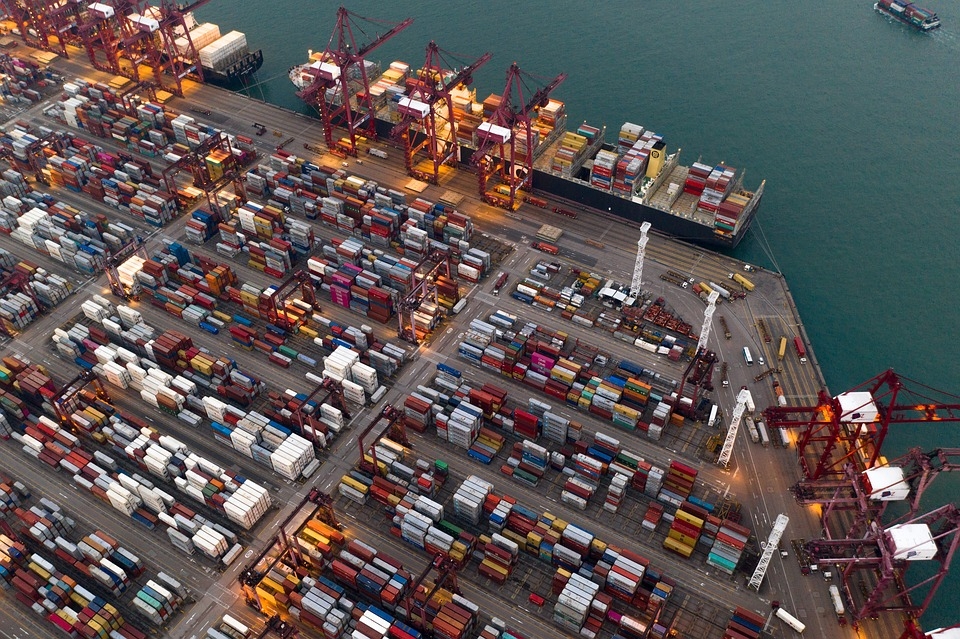The exports saw a mixed trend with a rise to Saudi Arabia and Bahrain while a decline to other countries of the region…reports Asian Lite News
Pakistan’s exports to the Middle East reduced by 11.87 per cent on a year-on-year basis to USD 1.491 billion in the first eight months of FY23 mainly caused by a substantial decline in exports to the United Arab Emirates (UAE), Dawn reported.
Pakistan’s exports to the Middle East saw a mixed trend with a rise to Saudi Arabia and Bahrain while a decline to other countries of the region, Dawn reported citing the data compiled by the State Bank of Pakistan. The UAE has emerged as a leading country for Pakistan’s export of goods as nearly 64 per cent of the total exports to the region only go to the UAE market, as per the Dawn report. However, Pakistan witnessed a decline of 19.91 per cent to USD 0.945 billion in 8MFY23 from USD 1.180 over the corresponding months last year (FY22).
Out of seven UAE states, the bulk of exports worth USD 856.27 million during 8MFY23 against USD 996.32m in the corresponding months last year was destined for Dubai, witnessing a decline of 14 per cent.
Pakistan’s top export products to UAE, include rice, bovine carcasses and half carcasses, men’s/boys’ cotton ensembles, guavas, and mangoes. Similarly, Pakistan’s top sectoral exports to the UAE include cereals, articles of apparel and clothing, meat and edible offal.
Saudi Arabia is the second biggest market for Pakistan’s exports in terms of value. However, the exports witnessed a rise of 15 per cent to USD 300.61m in 8MFY23 from USD 260.26m in the preceding fiscal year, as per the news report.
Pakistan’s exports to Saudi Arabia have stagnated at around USD 500m in the past decade. The data shows no significant growth in market access in comparison to the UAE. Pakistan’s top exports to Saudi Arabia include rice, bovine carcasses and half carcasses, tents, and textile materials.
Meanwhile, Pakistan’s exports to Qatar reduced by 3 per cent and reached USD 119.17 million in 8MFY23 from USD 122.87m during 8MFY22, according to Dawn report Pakistan’s exports to Qatar include rice, bovine carcasses, potatoes, onions, guavas, and mangoes. However, footballs were one of the most exported goods of Pakistan to Qatar during 7MFY23.
PKR 350b circular debt to China
The current outstanding payment on account of circular debt for Chinese Independent Power Producers (IPPs) has jumped to Pakistani Rupees (PKR) 350 billion with increasing demands to clear the backlog, The News International reported.
During a China-Pakistan Economic Corridor (CPEC) review meeting held on Friday, it was announced, “The outstanding backlog of Chinese IPPs stands at Rs350 billion, which is being accounted at the rate of 14 per cent while the remaining 86 per cent is being paid regularly. The CPPAG stated that it will be further improved.” Pakistan’s Planning Minister Ahsan Iqbal chaired the meeting and discussed progress on Special Economic Zones, ML-1, KCR and several new development initiatives to be discussed by the Joint Working Groups (JWGs), as per the news report.
Citing sources, the report said without making any substantial progress towards finalizing the financing plan for the construction of the much-awaited ML-1 project, the CPEC progress review committee was informed that the Chinese side was working on the financial mechanism for this multi-billion-dollar project.
“A Joint Financial Committee meeting on ML-1 is expected during the ongoing month to finalise the terms and kick-start the Package-1 of ML-1,” The News International quoted top official sources as saying in the meeting.
During the meeting, the Chinese side called on Pakistan to share the updated feasibility study of the Karachi Circular Railway (KCR) as the feasibility study conducted in 2017 has become outdated. The Sindh government was asked to share the Karachi Circular Railway updated feasibility study.
Ahsan Iqbal stressed the importance of increasing Pakistan’s exports and directed following up on the PM’s proposal to China to attach its officials to help create Islamabad’s export sector during his visit to China. He said the top priority of the government’s 5Es agenda was to increase exports, and Pakistan could benefit from Chinese expertise in this regard, according to The News International report.
During the meeting, the updated status of Special Economic Zones (SEZs) was also discussed wherein the minister ordered making the SEZs a medium to enhance exports. He said SEZs could develop collaboration and innovation, which could result in the development of new products and services better suited to the demands of international markets, as per the news report.
The meeting also discussed proposals for the upcoming Joint Working Group (JWG), including Advanced Metering Infrastructure (AMI) Solar Projects and identification study of pumped storage hydropower projects. Ahsan ordered the authorities to review all matrix and present progress updates as well as discussed ML-1 and KCR projects. (ANI)

